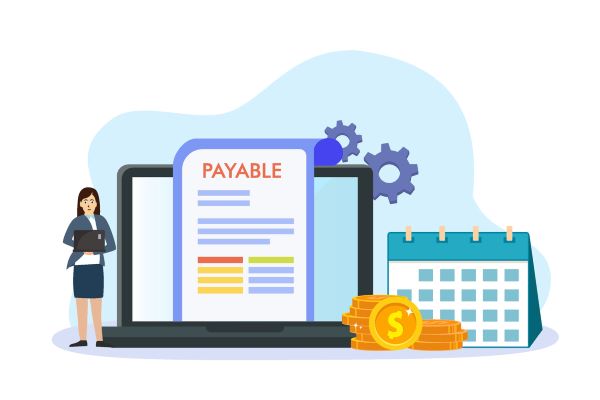Understanding the Transformational Journey of AP Teams

Business processes, particularly those in finance departments, are becoming more reliant on digital processes and less on manual processes.
In fact, electronic workflows and digital archives increasingly determine the reality of modern accounts payable (AP) teams. However, this does not mean companies have fully automated their administrative processes and work 100% digitally. The truth is that most businesses fall somewhere between hanging onto proven manual procedures and reaching for digital transformation.
But what does the practice of “digital transformation” look like? Let's examine the transformative journey many AP teams face nowadays.
E-Invoicing Goes Mainstream
The practice of e-invoicing has been mandatory in many South American, European, and Asian nations for several years. It is only in recent years that North American nations, such as the United States and Canada, have begun to follow suit. The motivation for e-invoicing is due to the increased activity between entities in the business and government sectors.
Federal agencies in the United States are mandated to issue electronic invoices for goods and services. Agencies must have an e-invoicing system that can generate, send, receive, and archive invoices electronically. Although it is not mandatory yet, Canada is also exploring a move towards digital invoices within its federal agencies.
Thus, global enterprises increasingly request e-invoicing capabilities from their North American partners to align with efficient, modern processes.
The predominant invoice format of the future—it seems—will not be paper or PDF but structured data like XML and EDI. Government agencies and businesses around the globe no longer see e-invoicing as an extra chore but as a means to cut costs, improve cash flow, eliminate manual work, and free up employees to invest their time in more strategic tasks (read more about e-invoicing in an article in the October 2023 PAYTECH issue).
The Cutting Edge of Document Digitization
Beyond e-invoicing, several key technological trends are transforming how companies process business documents to extract value faster. These trends include the following:
- PDF prominence: As paper usage fades, PDFs dethrone hard copies as the predominant invoice format. A recent survey among our more than 1,200 customers revealed more than 80% of companies now receive at least half their invoices as PDFs via email—up from less than 50% just a few years ago. This means manual scanning and digitization are no longer required for a large portion of documents.
- Cloud migration: Many firms recognize the scalability and cost benefits of the cloud and pursue cloud-first strategies. Document processing requires significant computing resources, making it a prime candidate to transition from on-premises servers to a cloud environment.
- Artificial intelligence (AI) assistance: Optical character recognition (OCR) has long been rule-based but never achieved 100% accuracy with scanned documents. AI finally optimizes outcomes, further boosting interpretation rates and reducing manual exceptions. AI also improves efficiency in subsequent invoice processing (e.g., through intelligent agent determination and AI-supported workflow processes).
- Remote work: The days when employees regularly clocked in nine-to-five at cubicles are a thing of the past. Even as some return to offices, flexible remote work is here to stay. This necessitates location-agnostic digital processes, rendering paper-based workflows obsolete.
Between software-as-a-service (SaaS), automation, and AI, businesses are getting smarter with how they handle documents. Outdated manual approaches can’t keep pace with the new demands of hybrid work.
Digitization Builds Supply Chain Resilience
Another key process that is becoming more automated and replacing outdated manual or analog processes is the digitization of the global supply chain. Most of us recall the supply disruptions that began during the waning days of the COVID-19 pandemic and continued into early 2023.
Digitization has the potential to simplify the entire source-to-pay cycle by doing the following:
By eliminating manual bottlenecks, data can surface faster to provide actionable insights. Inventory and payments adjust dynamically based on intelligent signals. This is the future—one where technology and data help mitigate volatility through agility and supply chains flex without breaking, strengthened by the resilience that comes with digitization.
Data Is Gold—The BI Advantage
End-to-end digitization, where upstream purchase orders link to back-end invoice processing, sets the stage for next-level optimization via business intelligence (BI). When decisions rely on real-time data instead of institutional knowledge or intuition alone, they grow far more precise.
With the proliferation of fast and affordable data warehousing, BI is no longer siloed to sales, marketing, or service functions. Now, financial teams embed rich analytics for purchasing and AP documents. Modern enterprise resource planning (ERP) systems showcase what is possible by combining transactional systems and data analytics to enable unprecedented real-time reporting.
But what does this actually look like for source-to-pay processes? Use cases span supplier management, cash forecasting, and operational improvements. On the supplier side, BI provides categorization and benchmarking. Teams can instantly identify top vendors by purchase volume or order frequency for tiered partnership models. They assess vendor performance on key metrics like order confirmation rates, delivery time variance, and query frequency.
For core processes, BI highlights insights on process efficiency to target areas requiring higher automation or training. And for the CFO, accurate cash projections derived from invoices and payment terms keep working capital optimized. In short, data and analytics give procurement and finance leaders an enterprise advantage in managing costs and risk.
Combining BI With AI
In the area of liquidity planning, BI can make predictions from existing data by combining it with AI. Examples include how many invoices are expected to arrive in the next month/quarter/year, how many are from a specific supplier or in total, how much they will amount to, etc.
Finally, to optimize internal processes, it is helpful to know how long the processing time for an invoice was and how many employees were involved.
Digitization Attracts Talent, Multiplies Productivity
The talent shortage cuts deep across accounting, IT, procurement, and other critical functions. With lean teams being the norm, workload spikes from staff churn quickly overwhelm organizations. Digitization delivers relief on multiple fronts.
First, by modernizing workflows, companies become employers of choice for skilled professionals. Younger professionals who are used to consumer tech also expect to have digital tools at their workplace. Outdated manual processes simply fail to attract or retain top talent.
Second, automation liberates workers from repetitive tasks so they can focus on strategic priorities. This maximizes thinly stretched teams’ capacity for value-add activities. Plus, migrating solutions to the cloud can further augment IT productivity through managed services.
The roadmap to intelligent AP weaves through every corner of the business. But aligned to a holistic digital transformation strategy, the journey leads to outsized returns—from productivity gains to increased compliance and considerable risk reduction. The time for action is now.
Jamie Delgado is VP of Sales at xSuite North America, specializing in process automation software and strategies.
